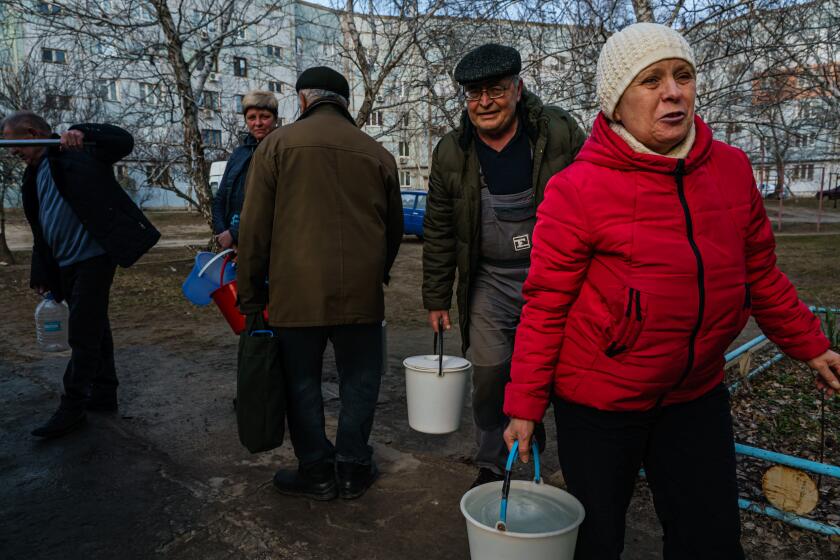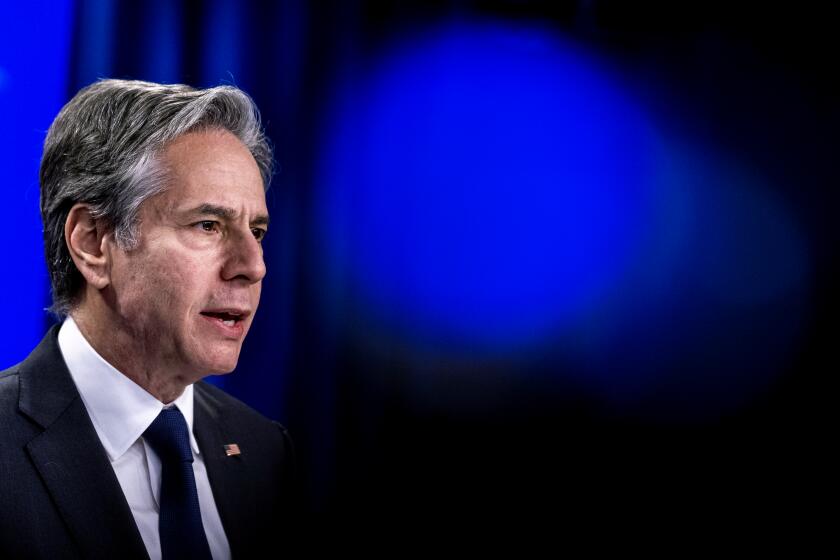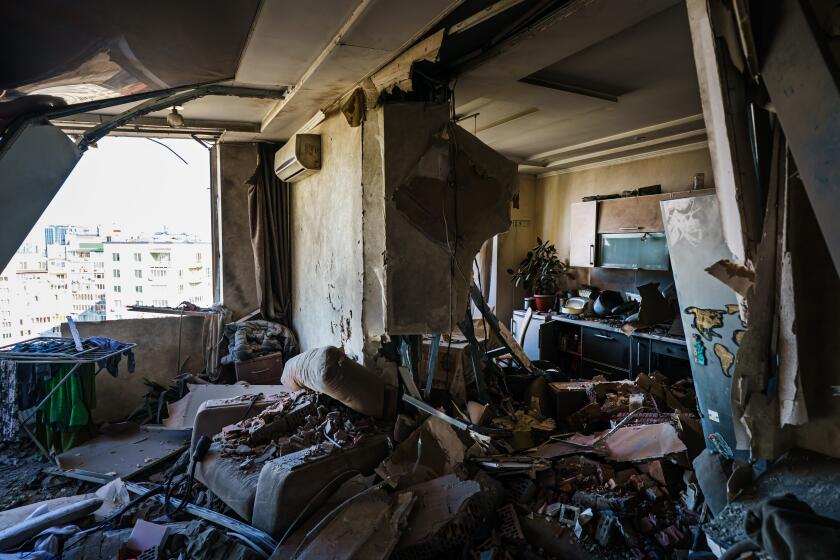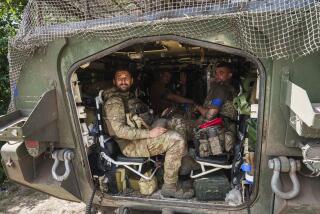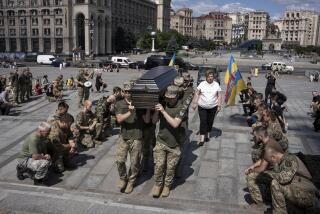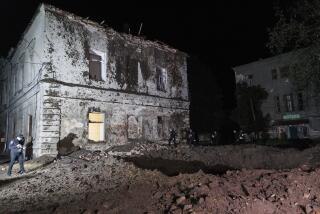Russian forces strike, seize a nuclear plant as they pound southern Ukraine
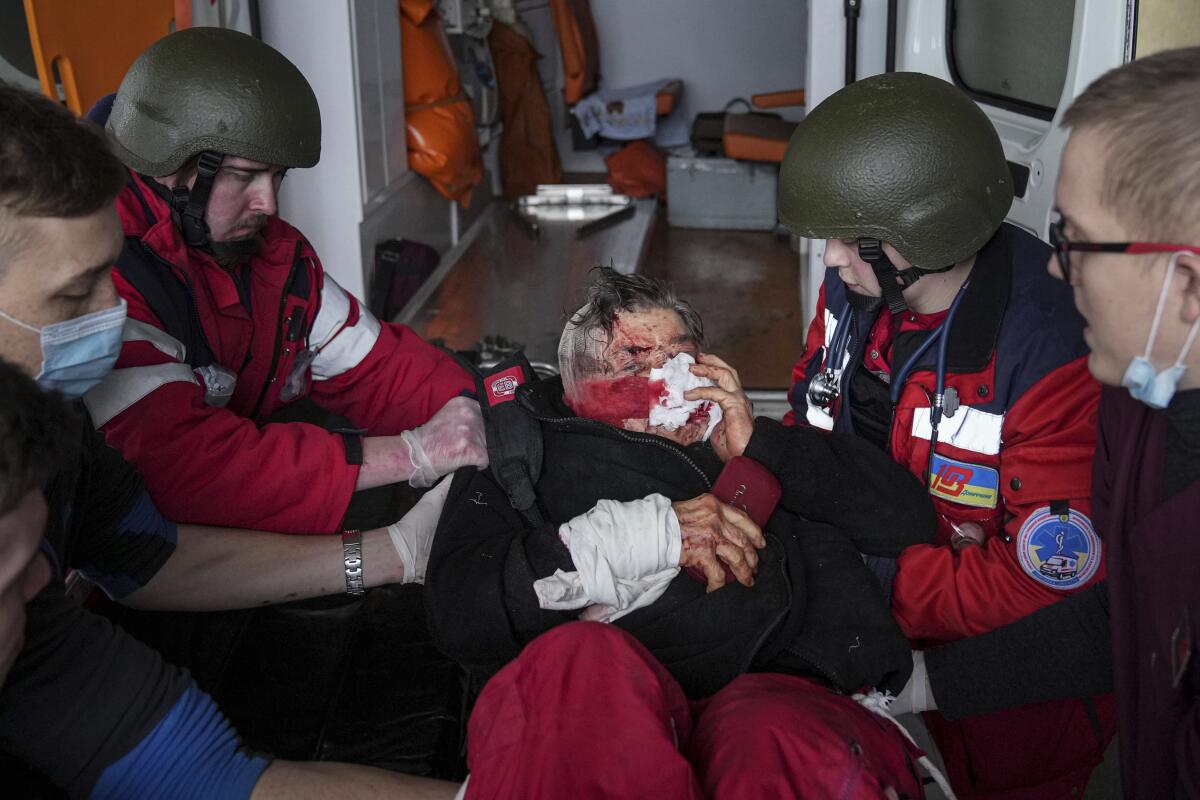
KYIV, Ukraine — Russian forces shelled and seized a nuclear power plant as they bombarded and besieged a swath of southern Ukrainian cities, seeking to sever access to the country’s crucial seacoasts even as the invaders appeared stalled in a bid to knock out Ukraine’s leadership by capturing or subduing the capital, Kyiv.
During an attack early Friday on the southeastern city of Enerhodar, home to Europe’s largest nuclear power complex, a fire broke out in one of the six reactors. Hours later, authorities reported that the blaze had been extinguished, radiation levels remained normal and the complex was in the hands of Russian forces — whom Ukrainian President Volodymyr Zelensky had beseeched to stop targeting the plant, for fear of a nuclear nightmare.
“Only urgent action by Europe can stop the Russian troops,” Zelensky said in an emotional video speech. “Do not allow the death of Europe from a catastrophe at a nuclear power station.”
Ukraine’s nuclear regulator said the agency’s staff was inspecting the compartment of Reactor No. 1 at the Zaporizhzhia plant for damage. The agency said on Facebook it was important that the plant maintain the capacity to cool nuclear fuel in order to avoid a disastrous meltdown.
International nuclear authorities expressed concern but not panic even as the fire triggered phone calls between Zelensky and President Biden and other world leaders.
As Russian President Vladimir Putin’s war in Ukraine shuddered into a second week, the full extent of a European refugee crisis on a scale not seen since World War II was coming into focus. An estimated 1 million Ukrainians — half of them children — have sought refuge outside the country, the United Nations and humanitarian organizations report.
The total number of those displaced internally and externally could swell to a staggering 10 million, U.N. spokesman Stephane Dujarric said.
Despite a tentative agreement Thursday by Ukrainian and Russian negotiators to set up safe corridors in some locales to allow humanitarian aid in and civilians out, the ferocity of the fighting has been escalating daily.
Russian forces unleashed a fresh barrage of artillery fire, rockets and air attacks Thursday on Mariupol, a strategic city of about 430,000 people in southeastern Ukraine, on the Sea of Azov near the Russian border, news reports said. Hundreds were feared dead in attacks that crumbled buildings and left civilians cowering in terror.
“We cannot count the number of victims there, but we believe at least hundreds of people are dead,” Mariupol’s deputy mayor, Serhiy Orlov, told the BBC. “We cannot go in to retrieve the bodies. My father lives there. I cannot reach him. I don’t know if he is alive or dead.”
The start of the onslaught against Mariupol coincided with Russia’s capture Wednesday of Kherson, at the mouth of the Dnieper near the Black Sea, which became the first major city to fall and indicated Russia’s intensifying attacks on civilians.
Three organizations with operations in California are helping people in eastern Ukraine, and so is the Red Cross. Here’s how you can contribute.
Invading troops have begun moving west from Kherson toward Mykolaiv, another major Black Sea port and shipbuilding center, and amphibious landing vessels were reported to be heading toward the historic seaside city of Odessa.
A spokesman for the Zaporizhzhia nuclear power plant, which supplies about a quarter of the country’s power, told Ukrainian television that firefighters could not reach the complex because Russian troops were shooting at them.
He said that the fire was in a reactor that is under renovation and not operating, but that it contains nuclear fuel.
Ukraine’s foreign minister, Dmytro Kuleba, tweeted: “If it blows up, it will be 10 times larger than Chornobyl! Russians must IMMEDIATELY cease the fire, allow firefighters, establish a security zone!”
The International Atomic Energy Agency said on Twitter that Ukrainian regulators had reported normal radiation levels around the plant.
The U.S. Department of Energy activated its nuclear incident response team as a precaution.
The Russian advances in the south came as Russian and Ukrainian representatives agreed on a mechanism for establishing humanitarian corridors, which would be coupled with temporary local cease-fires.
But few are holding out hope that the negotiations will be able to halt the biggest ground war in Europe in more than 75 years. Putin demands that Ukraine demilitarize and declare neutrality, and more broadly, the Russian leader has made clear his wish to reestablish Russia’s sphere of influence across the former Eastern Bloc, rearranging Europe’s entire security architecture.
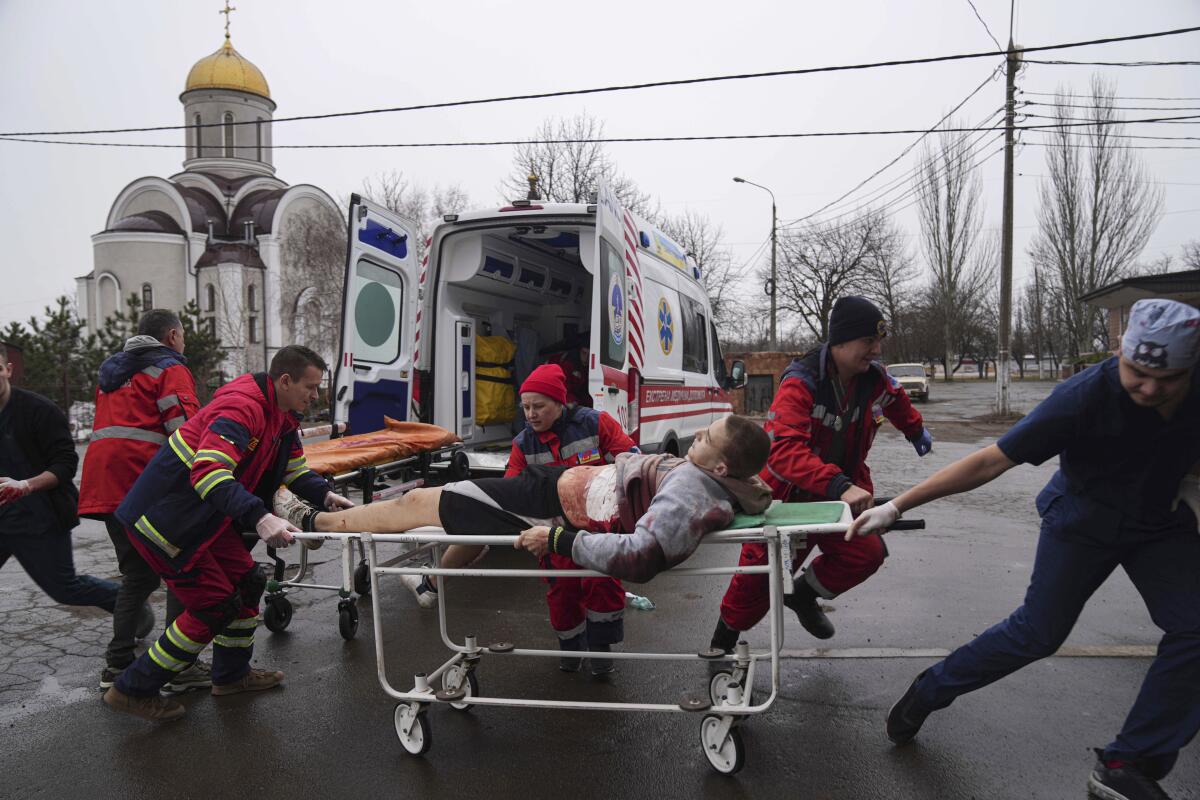
Some of those who have been in direct contact with Putin paint a dire picture of the Russian leader’s possible intentions in Ukraine.
After a 90-minute phone call Thursday between French President Emmanuel Macron and Putin, a senior French official who briefed reporters on condition of anonymity offered a bleak assessment: “Without making a prediction, we should expect the worst is yet to come.”
Western allies continued to try to force Putin from his course with new punitive steps. The White House said Thursday that the U.S. would impose sanctions reaching into Putin’s inner circle, targeting eight members of Russia’s elite, including Putin’s official spokesman. The Biden administration will also place visa restrictions on 19 oligarchs and their family members.
Although Ukrainians have put up staunch resistance over eight days of fighting, reports on the ground were grim. Russian troops have now surrounded Mariupol on all sides and could capture the port at any time, Ukrainian officials acknowledged.
“Our internal forces are very brave, but we are surrounded by the Russian army,” Orlov, the deputy mayor, told CNN. In Washington, a senior Defense official told reporters that the Pentagon believes that 90% of the forces that Putin assembled for the invasion are now in Ukraine.
The capture of Mariupol would bridge the gap between territories held by Russia-backed separatists in eastern Ukraine and Russian soldiers in the southern peninsula of Crimea, which Moscow annexed by force in 2014.
Along with the seizure of other coastal cities, it would give Russia control over the rest of southern Ukraine, cutting off the country’s access to key shipping routes in the Black Sea and devastating Ukraine economically.
Secretary of State Antony J. Blinken announces more sanctions against Russia and worships with Ukrainians in Washington.
The desperate conditions in Mariupol and elsewhere paint a dire picture for Ukraine of an overwhelmingly powerful military foe willing to launch more attacks on civilian targets, including schools and hospitals. A prosecutor for the International Criminal Court says senior Russian leaders are being investigated for war crimes, crimes against humanity or genocide.
Cities such as Kyiv and Kharkiv have come under devastating fire as the Russian military attempts to regain the initiative after its initial assault failed to achieve a rapid victory. The Ukrainian State Emergency Service has said more than 2,000 civilians have been killed in the invasion.
Kyiv was hit by two massive explosions that lighted up the sky Wednesday evening and before dawn Thursday. One of the blasts damaged the central train station, a key transit point for thousands fleeing the capital, but packed trains were still running on Thursday, ferrying people away from danger.
But while the capital remains under heavy threat, a 40-mile-long column of Russian armored vehicles on Kyiv’s northern outskirts “is still stuck there,” U.S. and British defense officials said Thursday, amid intelligence that the convoy was experiencing fuel and supply shortages, together with sporadic attacks by Ukrainian regular and irregular forces.
Putin insisted that Russian forces were not targeting civilians. “Precision weapons are used to destroy exclusively military infrastructure,” he said, describing any reports otherwise as “elements of an anti-Russian disinformation campaign.”
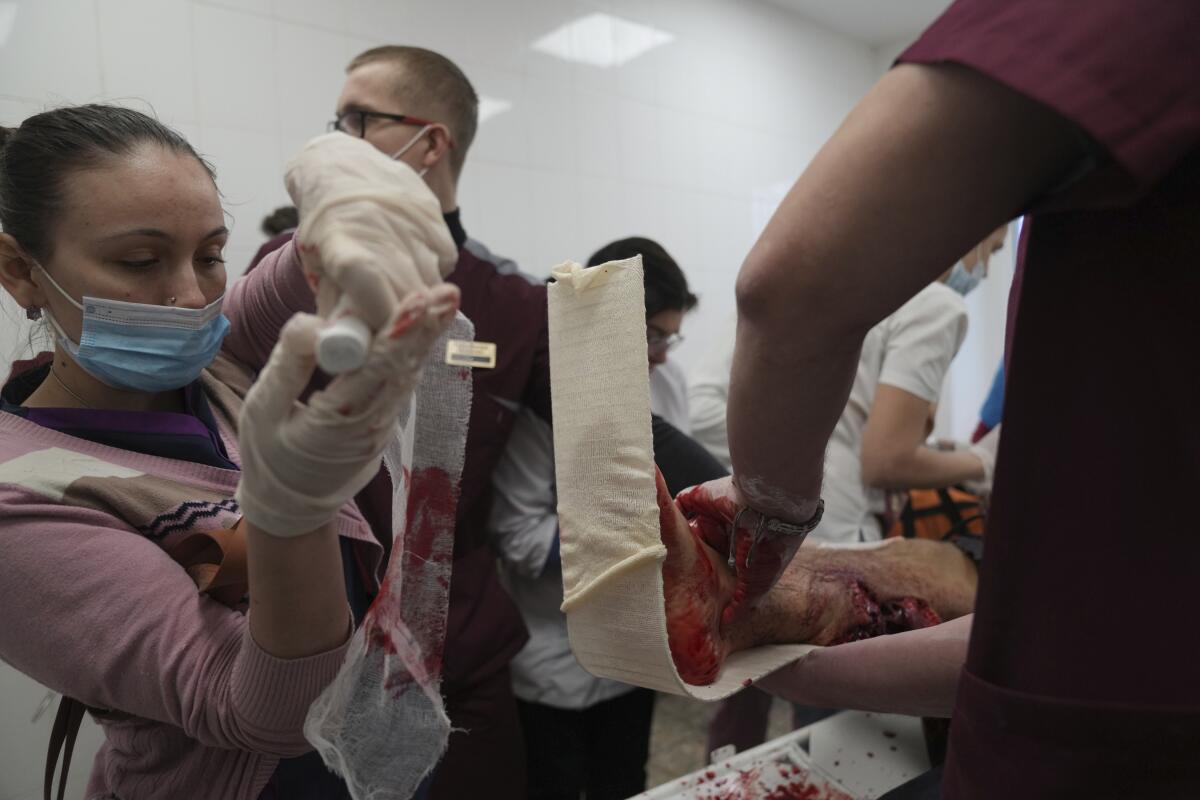
The Ukrainian president continued to voice defiance.
“One week ago, at 4 a.m., Russia invaded our independent Ukraine, our land,” Zelensky said Thursday in the latest video address aimed at buoying his people and showing them he remains in place and in charge. “The first hours and days ... were extremely difficult, but we were united and therefore strong, and therefore we withstood.”
Western governments, meanwhile, sought to bolster front-line states on Russia’s western flank.
U.S. Secretary of State Antony J. Blinken was visiting Moldova, Lithuania, Latvia and Estonia “to underscore our solidarity and determination to hold the Russian and Belarusian governments accountable for their brutal war against Ukraine,” he said in a departure statement Thursday.
British Defense Secretary Ben Wallace, also visiting vulnerable Baltic states, did not mince words about what might lie ahead.
“What we’ve seen in Ukraine is beyond … anybody’s idea of what might happen,” Wallace said at a news conference in Estonia. “Not only has Russia illegally invaded Ukraine, it is now unleashing violence on civilian areas, bombardments and inflicting casualties on potentially thousands of civilians.”
Russia now appears to be targeting government buildings and residential apartments, killing civilians and stirring chaos.
But Wallace said most major population centers remain under the Ukrainian flag.
“They still have not taken control of a number of the big cities,” he said of Russian troops. “They might have entered them; in some cases, they’ve been repelled. But taking control of large cities is a completely different step, and they have not succeeded.”
In the face of international condemnation, including a U.N. General Assembly resolution Wednesday demanding a halt to Moscow’s aggression, Russian Foreign Minister Sergei Lavrov insisted Thursday that the U.S. and its NATO allies were responsible for provoking the war.
Breaking News
Get breaking news, investigations, analysis and more signature journalism from the Los Angeles Times in your inbox.
You may occasionally receive promotional content from the Los Angeles Times.
“They are listening to us, but they are not hearing us, and they’re trying to force upon us their own understanding of how Europe should live,” Lavrov said, comparing the U.S. to Napoleon and Hitler in its “goal to subjugate Europe.”
Russia is paying an increasing economic price for its war. The country’s central bank said the main stock exchange would remain closed for the fourth consecutive day Thursday, a move made to prevent a collapse of the Moscow Exchange.
Bulos reported from Kyiv, King from Washington and Pierson from Singapore. Times staff writers Henry Chu in London and Anumita Kaur, Tracy Wilkinson and Eli Stokols in Washington contributed to this report, as did the Associated Press.
More to Read
Sign up for Essential California
The most important California stories and recommendations in your inbox every morning.
You may occasionally receive promotional content from the Los Angeles Times.
